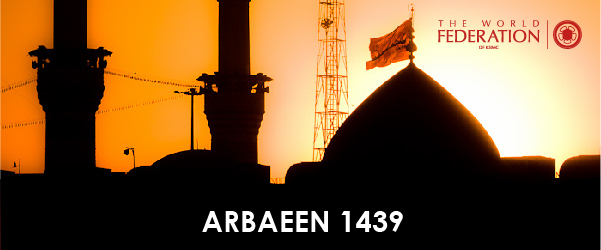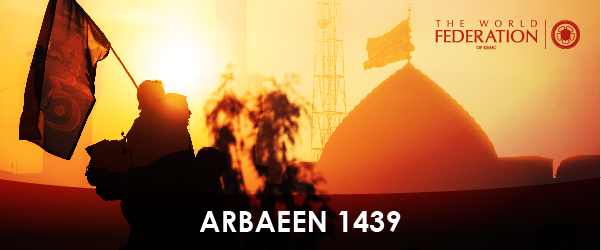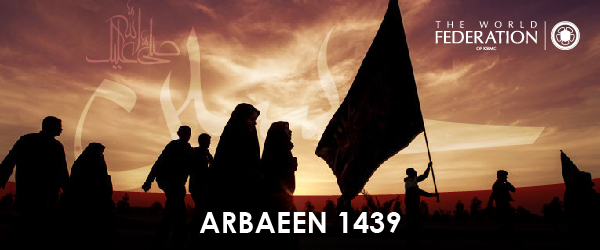MARTYRDOM SWEETENS DEATH

The Significance of the Arbaeen Walk According to the Maraji‘ of Taqleed
On the occasion of the approaching Arbaeen of 1439 AH, we would firstly like to offer our condolences to the Living Awaited Imam (af) from the progeny of Imam Husayn (a).
We remind mumineen that the Ziyarat of Imam Husayn (a), on this day, is highly recommended. Imam Hasan al-Askari (a) mentions it as being a sign of a true believer, and he lists it among other signs such as performing 51 rak‘ats of daily prayers (17 obligatoryrak‘ats and 34 recommended).[1] This seems to suggest that just as salat is the pillar of the religion, the Ziyarat of Arbaeen is the pillar of the wilayat of the Ahl al-Bayt (a). May Allah help us to attain salvation by saving us from ignorance and arrogance, and may He help us to move progressively towards perfection by following the lofty divine values taught to us by the Ahl al-Bayt (a).
We are blessed to live in times when we can witness and experience the massive display of love for Imam Husayn (a) in the annual Arbaeen Walk to the shrine of Imam Husayn (a). Indeed, all of our great maraji‘ of taqleed (may Allah protect them as the best guides to the teachings of the Ahl al-Bayt (a)) have praised and promoted the Walk, and some of them have even participated in it.
[1] Tahdhib al-Ahkam by Shaykh Tusi, 6:52, hadith 122; and Misbah al-Mutahajjid wa Silah al-Muta‘abbid by Shaykh Tusi, 2:787-788.
Below are some of their quotes:


The Saudi Ulema and the Shi‘a of Saudi Arabia
By RAIHAN ISMAIL
Centre for Arab & Islamic Studies, Australian National University, Canberra ACT, Australia